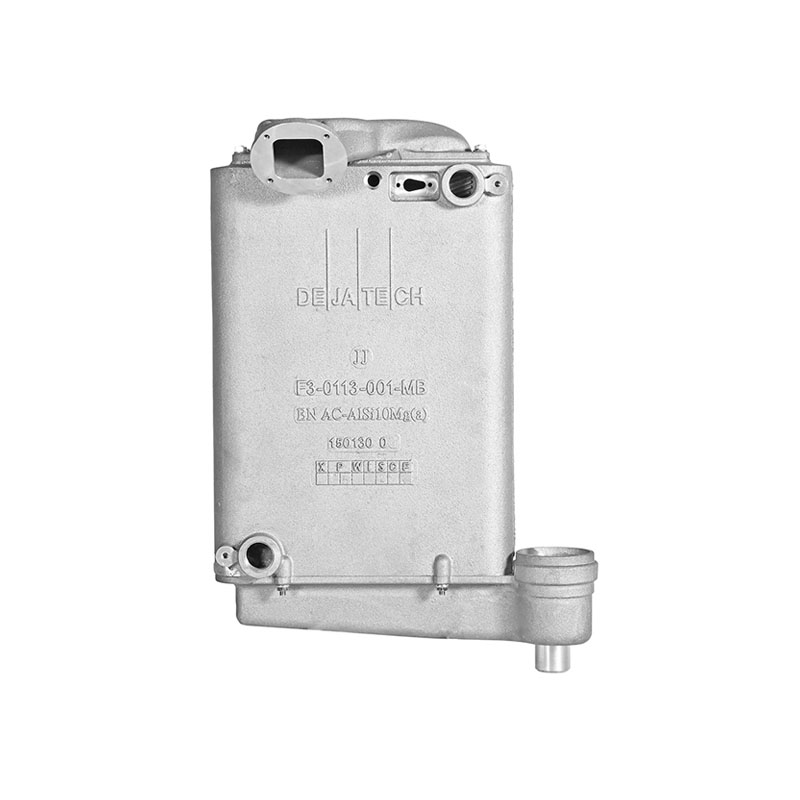Condensing Heat Exchanger: Efficiency in Heat Transfer
2025-03-27
In modern heating, ventilation, and air conditioning (HVAC) systems, as well as industrial applications, the role of heat exchangers cannot be overstated. Among the different types of heat exchangers, condensing heat exchangers stand out for their efficiency in transferring heat from one medium to another. These devices play a crucial part in improving energy efficiency, reducing waste heat, and enabling systems to operate at optimal temperatures.
What is a Condensing Heat Exchanger?
A condensing heat exchanger is designed to facilitate the exchange of heat between two fluids—typically a gas and a liquid. This process involves transferring thermal energy from the hot gas to the cooler liquid. As the heat is removed, the gas cools and condenses into a liquid state. This phase change from gas to liquid allows the system to release significant amounts of energy, making condensing heat exchangers especially efficient.
In essence, these heat exchangers are designed to handle the latent heat of condensation, which is the heat released when a gas turns into a liquid. They are commonly used in systems like boilers, refrigeration systems, and air conditioning units, where efficient heat transfer is essential.
How Do Condensing Heat Exchangers Work?
The working principle of a condensing heat exchanger is based on the fundamental concept of heat transfer. The hot gases, which are often byproducts of combustion or industrial processes, are passed through a heat exchanger. These gases are typically hotter than the cooling fluid (usually water or another coolant), so the heat from the gas is transferred to the liquid. As the gas cools down, it condenses into a liquid.
The cooling fluid, which flows through the heat exchanger in the opposite direction to the hot gas, absorbs the heat released by the gas. This heat is then carried away by the fluid and, in many cases, released through a cooling tower or other system that facilitates heat dissipation.
A key feature of condensing heat exchangers is their ability to capture not only the sensible heat (the heat that raises the temperature of a substance) but also the latent heat, which is the heat released during condensation. This makes them far more efficient than non-condensing heat exchangers, which only capture sensible heat.
Applications of Condensing Heat Exchangers
Condensing heat exchangers are widely used in various applications, both in residential systems and industrial processes:
1. HVAC Systems: In residential and commercial HVAC systems, condensing heat exchangers are used in both air conditioning and heating systems. They help to enhance system efficiency by recovering heat from the exhaust air and reducing the energy required to cool or heat indoor spaces.
2. Boilers: Condensing heat exchangers are a common component in modern condensing boilers. These boilers are more energy-efficient than traditional boilers because they recover heat from exhaust gases, which would otherwise be wasted. By recovering this heat, the system can operate at higher efficiency levels and reduce fuel consumption.
3. Refrigeration Systems: In refrigeration and cooling systems, condensing heat exchangers help remove heat from the refrigerant, which is essential for the refrigeration cycle. The heat exchanger allows the refrigerant to cool and condense into a liquid state, enabling the cycle to continue.
4. Power Plants: Large industrial power plants use condensing heat exchangers to optimize energy production. These systems capture waste heat from exhaust gases and use it to preheat water or other fluids, improving the overall efficiency of the plant.
5. Industrial Processes: Many industries, including chemical manufacturing, oil and gas, and food processing, rely on condensing heat exchangers to recover heat from their processes. By capturing and reusing this energy, these industries can lower operational costs and reduce their carbon footprint.
Benefits of Condensing Heat Exchangers
1. Energy Efficiency: The primary advantage of condensing heat exchangers is their ability to recover both sensible and latent heat, which significantly boosts overall system efficiency. This is particularly important in systems where energy consumption is a significant cost factor.
2. Reduced Fuel Consumption: By capturing additional heat from exhaust gases, condensing heat exchangers help systems require less fuel to maintain the desired temperature. This can lead to substantial cost savings in both residential and industrial applications.
3. Lower Environmental Impact: With improved efficiency and reduced fuel consumption, condensing heat exchangers contribute to lowering greenhouse gas emissions and reducing the environmental impact of heating and cooling systems. This is especially important in industries and buildings that are striving for sustainability.
4. Enhanced System Lifespan: The efficiency provided by condensing heat exchangers can reduce the wear and tear on other system components. This can lead to extended lifespans for both the heat exchanger and the system as a whole, reducing maintenance costs and downtime.
5. Versatility: Condensing heat exchangers can be designed to meet a variety of operational needs. Whether for industrial processes, residential heating, or large-scale power generation, they can be customized for different heat transfer applications.
Challenges and Considerations
While condensing heat exchangers offer significant benefits, they are not without their challenges:
1. Condensate Management: The condensation process generates water, which must be properly managed. In certain applications, the condensate can be acidic and may require neutralization before disposal.
2. Corrosion Risk: The constant exposure to moisture can increase the risk of corrosion in the heat exchanger, particularly in the case of metallic heat exchangers. Proper materials and coatings must be selected to ensure longevity.
3. Initial Cost: The initial installation cost of a condensing heat exchanger system can be higher compared to traditional systems. However, the savings in fuel costs and increased efficiency often outweigh the initial investment over time.
4. Maintenance: Regular maintenance is necessary to ensure that condensing heat exchangers continue to operate at peak efficiency. This includes cleaning the system, checking for corrosion, and ensuring proper condensate drainage.
Conclusion
Condensing heat exchangers are vital components in modern energy-efficient systems, from HVAC and boilers to industrial processes and power plants. Their ability to recover both sensible and latent heat makes them far more efficient than conventional heat exchangers, leading to significant cost savings, reduced environmental impact, and longer system lifespans. As industries and homeowners alike continue to prioritize energy efficiency and sustainability, the role of condensing heat exchangers will only grow, offering a pathway to a more energy-efficient and environmentally-friendly future.



